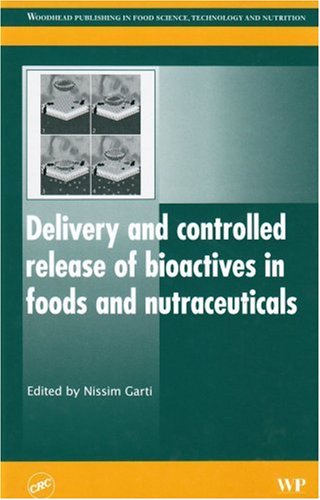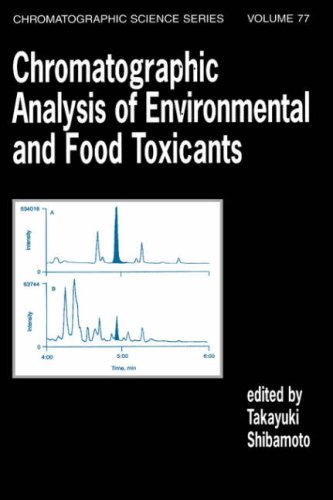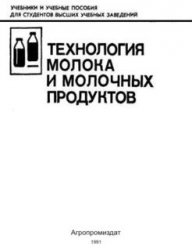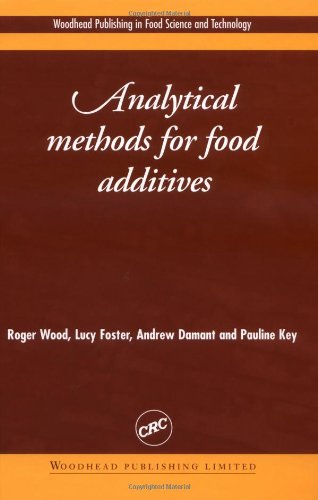Nissim Garti1845691458, 9781845691455, 9781845694210
Table of contents :
Contents……Page 6
Contributor contact details……Page 12
Preface……Page 16
Part I The effectiveness of controlled release and delivery systems……Page 20
1.1 Introduction……Page 22
1.2 Measuring absorption, metabolism and tissue targeting……Page 24
1.3 Study design and interpretation……Page 32
1.4 Other considerations……Page 38
1.5 Health response……Page 40
1.6 Implications of controlled absorption for product development……Page 41
1.8 Sources of further information and advice……Page 43
1.9 References……Page 44
2.1 Introduction……Page 45
2.2 Understanding the structure of the gastrointestinal mucus layer……Page 46
2.3 Implications of the mucin molecules and the mucus layer in controlled release and delivery of functional food ingredients……Page 55
2.6 References……Page 66
3.1 Introduction: a holistic view of delivery systems……Page 72
3.2 Delivery systems: formulation, processing and post-processing……Page 73
3.3 In vivo tests……Page 89
3.4 In vitro tests……Page 96
3.5 Future trends……Page 114
3.6 Sources of further information and advice……Page 115
3.7 References……Page 116
4.1 Introduction……Page 126
4.2 Lyotropic lipid liquid crystals……Page 128
4.3 Lamellar phase colloids……Page 130
4.4 Nonlamellar liquid crystalline lipid-based nanoparticles……Page 131
4.5 Future trends……Page 144
4.7 References……Page 145
Part II Materials and techniques for controlled release and delivery of nutrients……Page 152
5.1 Introduction……Page 154
5.2 Synthesis of structured lipids……Page 157
5.3 Nutrition, absorption, transport and metabolism of structured lipids……Page 159
5.4 Foods applications of structured lipids……Page 160
5.5 Structured lipids in drug delivery……Page 162
5.6 References……Page 165
6.1 Introduction……Page 168
6.2 Microemulsions……Page 171
6.3 Loaded microemulsions……Page 181
6.4 Bioavailability of nutraceuticals……Page 191
6.5 Microemulsions as microreactors……Page 193
6.7 References……Page 198
7.1 Introduction……Page 203
7.2 Dietary omega-3 fatty acids……Page 204
7.3 Dietary omega-3 fatty acids and health……Page 205
7.4 Potential for omega-3 fatty acids in functional foods……Page 207
7.5 Mechanisms of lipid oxidation……Page 209
7.6 Lipid oxidation in emulsions……Page 212
7.7 Interfacial engineering……Page 213
7.8 Electrostatic layering in oil-in-water emulsions……Page 215
7.9 Microencapsulation of oil-in-water emulsion systems……Page 217
7.10 Emulsion droplet engineering to stabilize omega-3 fatty acids……Page 219
7.11 Conclusions……Page 221
7.12 References……Page 222
8.1 Introduction……Page 226
8.2 Structure and properties of lipids……Page 227
8.3 Self-assembly and microstructure of lipid systems……Page 228
8.4 Liposomes……Page 230
8.5 Cubic and hexagonal mesophases and their dispersed nanoparticles……Page 236
8.6 Future trends……Page 243
8.7 References……Page 244
9.1 Introduction……Page 253
9.2 Complexes and coacervates……Page 255
9.3 Conjugates – covalently bonded biopolymers……Page 262
9.4 Complexes of a protein with a polysaccharide-protein conjugate……Page 264
9.7 References……Page 265
10.1 Introduction……Page 270
10.2 Food protein hydrogels and related networks as nutraceutical carriers……Page 271
10.3 Food protein micro- and nanoparticles……Page 277
10.4 Future trends……Page 289
10.7 References and further reading……Page 290
11.1 Introduction……Page 298
11.2 Uses of starch to control delivery in microencapsulation……Page 299
11.3 Starch as nanoencapsulation material……Page 304
11.4 Conclusion……Page 307
11.5 References……Page 308
Part III Delivery and controlled release of particular nutraceuticals……Page 314
12.1 Introduction……Page 316
12.2 Antioxidants and vitamins in protecting human health……Page 317
12.3 Advantages of encapsulation over traditional delivery methods……Page 323
12.4 Top-down techniques used for encapsulation of antioxidants and vitamins in polymeric nanoparticles……Page 328
12.6 Controlled release of antioxidants and vitamins……Page 332
12.7 Conclusions……Page 336
12.8 Future trends……Page 337
12.9 References……Page 338
13.1 Introduction……Page 350
13.2 Encapsulation technologies for folates……Page 353
13.3 Controlled release of folate in the gastrointestinal system……Page 356
13.4 Applications in functional foods……Page 357
13.5 Future trends……Page 359
13.6 References……Page 360
14.1 Introduction……Page 363
14.2 Encapsulation technologies for probiotics……Page 365
14.3 Applications in nutraceuticals……Page 373
14.4 Applications in functional foods……Page 377
14.5 Future trends……Page 382
14.7 References……Page 383
15.1 Introduction……Page 389
15.2 Encapsulation technologies used to deliver fish oils……Page 396
15.3 Using encapsulated fish oils in food products……Page 408
15.4 Suppliers of microencapsulated fish oil powder……Page 412
15.5 Future trends……Page 413
15.7 References……Page 414
16.1 Introduction……Page 423
16.2 Solid formulations for proteins……Page 424
16.3 Surface formation in drying……Page 427
16.4 Coating in spray drying……Page 430
16.5 Polyelectrolyte microcapsules for protein encapsulation……Page 435
16.6 Summary and future trends……Page 440
16.7 References……Page 441
Part IV Regulatory issues and future trends……Page 446
17.1 Introduction……Page 448
17.2 Selection of ingredients……Page 449
17.3 Stability of the product……Page 458
17.4 Bioavailability of the active ingredient……Page 462
17.5 Future trends……Page 466
17.7 References……Page 467
18.1 Introduction……Page 469
18.2 The food additives……Page 473
18.3 Bioavailability and performance – the need for new vehicles……Page 475
18.4 Bioavailability……Page 477
18.6 Specific targets……Page 478
18.7 The future of controlled release systems……Page 479
18.8 Encapsulation with organogels and lyotropic liquid crystals……Page 481
18.11 References……Page 482
Index……Page 484







Reviews
There are no reviews yet.